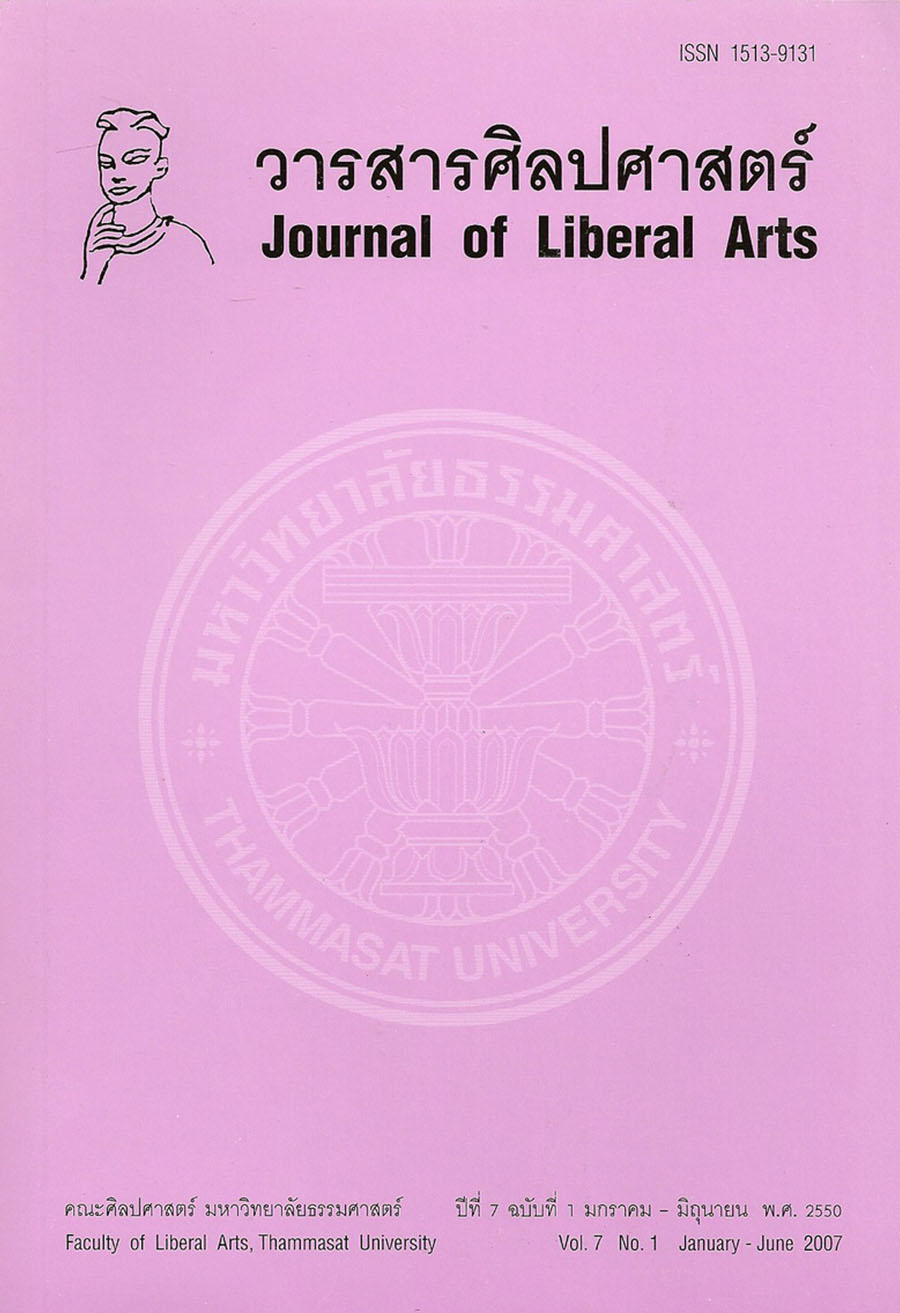Understanding a Short Story: The Roles of Linguistic Features and Encyclopedic Knowledge
Main Article Content
บทคัดย่อ
This paper claims that understand literary works, readers rely not only on linguistic features but also on encyclopedic knowledge, or the knowledge of the world. In Edgar Allen Poe’s “The Tell-Tale Heart”, such linguistic features as structural parallelism and verbal parallelism constitute an act of encoding which invites the reader to interpret. At the same time, contemporary works show the influence of fear on the human mind, enhancing the reader’s understanding. For example, John Conolly’s work illustrates how fear is related to the inability to distinguish between imagination and reality. By referring to Conolly’s work, readers realized the protagonist is victimized by fear.
บทความนี้แสดงว่าการที่จะเข้าใจงานวรรณกรรม ผู้อ่านมิได้ให้ความสำคัญกับคุณสมบัติต่างๆ ทางภาษาศาสตร์เท่านั้น แต่ยังอาศัยความรู้ทั่วไปเกี่ยวกับโลกด้วย กรณีเรื่องสั้นของ Edgar Allen Poe เรื่อง “The Tell-Tale Heart” ลักษณะต่าง ๆ ทางภาษาศาสตร์ เช่น โครงสร้างขนาน หรือการซ้ำคำ ทำให้ผู้อ่านต้องพยายามตีความหาสาเหตุว่าทำไมผู้เขียนจึงใช้เทคนิคการเขียนเช่นนั้น ในขณะเดียวกันงานเขียนอื่นที่ผลิตขึ้นในเวลาเดียวกับเรื่องสั้นเรื่องนี้แสดงให้เห็นถึงอิทธิพลของความกลัวที่มีต่อสภาพจิตใจของมนุษย์ทำให้ผู้อ่านเข้าใจเรื่องสั้นเรื่องนี้ได้ดีขึ้น เช่น งานของจอห์น คอนอลลี่ แสดงให้เห็นว่าความกลัวทำให้ตัวละครเอกในเรื่องไม่สามารถแยกแยะระหว่างจินตนาการและความจิรง เมื่อผู้อ่านอ่านงานของคอนอลี่ก็จะทราบว่าตัวละครเอกมีปัญหาเรื่องความกลัว

